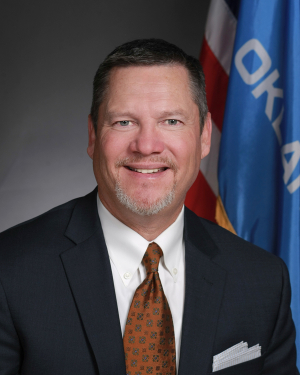The Senate and House adjourned this year’s legislative session Sine Die this past Thursday, shortly before our constitutional deadline to complete legislative work for this year. In the final week of the session, the Senate passed a $12.47 billion state budget for the fiscal year that begins in July, confirmed many of the governor’s appointees to serve in state government and voted on remaining policy bills.
I’m proud the Senate crafted and passed this new state budget through a wholly transparent process that allowed the public to stay involved every step of the way. Every dollar in this budget represents Oklahomans who will benefit from the state services being funded. As chairman of the Senate Appropriations Committee, I was honored to help build this budget and then advance it to the governor’s desk.
This budget includes the largest tax cut in state history and boosts state savings in case of an economic downturn. There are funding increases for K-12 education, higher education and CareerTech. Several colleges and universities will receive money for new programs and initiatives, which includes funding for Langston University and Oklahoma State University to expand their extension services. OSU will also receive $80 million for a new science building and $20 million for an animal diagnostics lab.
The spending plan also includes additional funding for various law enforcement entities to make targeted investments, such as a new headquarters building for the Oklahoma State Bureau of Investigation and a grant program to increase county sheriffs’ salaries. The budget includes funding to help repair the Arkansas River levees in Tulsa, a new program through the attorney general’s office to help domestic violence victims and $200 million for the Oklahoma Department of Transportation to accelerate infrastructure projects in rapidly growing rural areas.
One of my legislative priorities this year is factored into the budget. I passed legislation that repeals a cap on motor vehicle tax collections, which limited how much money counties received for road maintenance and repairs. This means counties, especially those in rural areas, will now receive more funding to tackle road and highway improvements. In fiscal year 2025, counties are expected to receive $8.9 million in additional funding as a result.
For the first time, Oklahoma will begin tackling deferred maintenance at state properties on an ongoing basis with the new Oklahoma Capital Assets Maintenance and Protection Fund. The budget includes $350 million to address long overdue maintenance projects at public colleges and universities, state parks and various state-owned buildings. In the new fiscal year, the Office of Management and Enterprise Services and the State Regents for Higher Education will each receive $56.25 million and the Tourism and Recreation Department will receive $12.5 million to address maintenance needs. These entities can tap into this money to upgrade dilapidated facilities, fix heating and cooling units in old buildings, replace aging electrical wiring, improve park infrastructure and make other repairs.
Beginning in fiscal year 2029, $50 million will be allocated to this fund each year for ongoing maintenance needs. I was glad to take the lead on this issue after a handful of lawmakers introduced legislation this year to change how Oklahoma cares for its state assets.
As always, it’s an honor and a privilege to serve the people of Senate District 20.
Please feel free to contact my Capitol office with any questions or concerns you may have about legislation or other issues impacting our state at 405-521-5628 or at Chuck.Hall@oksenate.gov.




Be the first to comment on "Senator Hall: “Every dollar in this budget represents Oklahomans”"